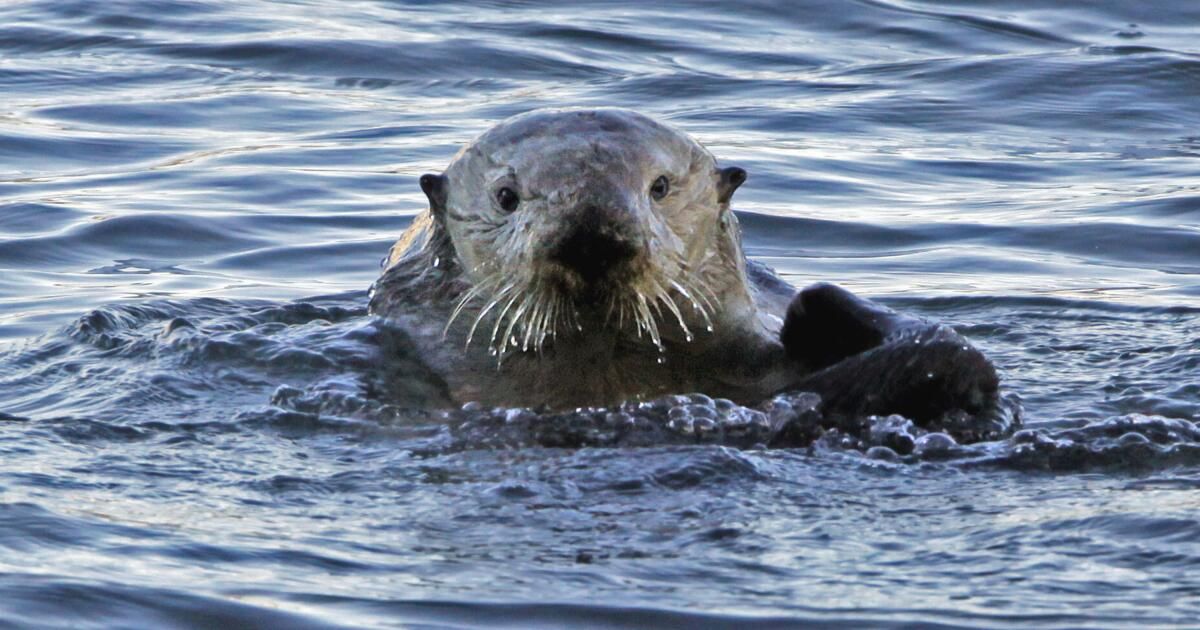Sea otters are extremely cute creatures and are a delight to watch rolling and diving in the kelp canopy of Monterey Bay, where some 3,000 endangered southern otters play an essential role in maintaining the kelp forest. But for crabs, clams, abalones, urchins and some fishermen, sea otters are voracious sea weasels that can eat 25% of their body weight a day, a perceived threat to life and livelihood.
That's why some lively discussions were launched at 16 open houses hosted by the U.S. Fish and Wildlife Service last year to get public input, as well as the invitation In other words, the “potential reintroduction of sea otters into their historic range,” including Oregon and northern California, a decision expected to be made this year.
In 2020, Congress directed the service to study the feasibility and cost of restocking otters, in part out of fear that an oil spill or other incident could wipe out the group concentrated around Monterey Bay. In September 2023, U.S. Fish and Wildlife rejected a petition from the fishing industry to remove otters from threatened status under the Endangered Species Act because California's population has failed to grow. significantly in recent decades.
There was an additional incentive to maintain protection: the continued marine ravages linked to climate change. An algae bloom off the central California coast killed hundreds of sea lions and dolphins last summer, multiple “red tides” have invaded San Francisco Bay, and nearly 95% of Northern California's kelp forest has been decimated by tiny purple sea urchins, whose top predator (with the sea otter out of the picture) (the sunflower starfish) has largely died due to a debilitating disease caused or exacerbated by warming. of ocean temperatures.
Once upon a time, huge rafts of hundreds of thousands of sea otters filled the coastal waters of the northern Pacific coast, from Baja California to Japan, until they were driven to the brink of extinction by Captain Cook and other British, Russians and Americans. from the 18th and 19th centuries. fur trappers, who killed “sea beavers” to supply the Chinese imperial court with luxurious otter pelts. Remnant populations were protected beginning in 1911. In California in the early 1960s, survivors from around Big Sur recolonized Monterey Bay, feasting on algae-eating urchins and revitalizing the kelp forest. A small group has even migrated south, near Santa Barbara.
Now environmentalists from Oregon and California, and several indigenous groups, including the Kashia Band of Pomo Indians in Sonoma County, are mobilizing in support of an attempt to restore otters where they have long been absent, including San Diego Bay. Francisco. Fishermen are not so optimistic.
At the Bodega Bay open house, an abalone diver, Doug Jung, succinctly summarized fishermen's concerns: Wouldn't reintroduced otters “mine the ocean”?
Dick Ogg, a longtime fisherman, was more specific. “The potential for impact,” he said, “cannot be quantified. If they eat the juvenile crab, it could be a big problem. Dungeness crab is our number one fishery.”
There was no salmon season in California in 2023 due to the long drought that preceded last winter's torrential rains, and the 2024 season is still in doubt. As for recreational abalone diving on the north coast, it has been closed since the kelp forest collapsed (commercial abalone diving was banned a long time ago). Things are precarious everywhere for West Coast commercial fishermen, who worry about keeping their waterfronts functioning.
“I still think nature will do its own job,” Ogg told Fish and Wildlife representatives in Bodega Bay. “I wouldn't mind if [otters] recolonized on their own.”
But natural repopulation from north of the Golden Gate is not likely. With the decline of protective coastal algae and a now healthy population of white sharks in the region's waters, migrating otters have a good chance of becoming an excellent white snack. But with human help, otter reintroduction could avert the challenge.
If the effort is successful, the impact on fishing may not be as feared.
A 2020 study in the journal Science found that Canada's reintroduction of sea otters to British Columbia not only generated $42 million from otter-loving tourists, but also added $9 million to the commercial fishery thanks to restoring kelp habitat for lingcod and other species. Alaska, where released sea otters helped repopulate coastal waters in the 1960snow has the largest number of otters and the most productive commercial fishery in the US.
“The sea otter could very well be the salvation for…fishing in the coming years if we can rebuild and repair a healthy ecosystem,” suggests Rep. Jared Huffman (D-San Rafael), whose congressional district includes the entire coast north of San Francisco.
In Oregon and Northern California, there is hope that the cascading imbalances that humans have caused (exterminated otters, diseased starfish, disappearing abalones) can begin to be corrected, and that the rich kelp forest habitat in marine life and a buffer against torrential storms. storms, can recover.
And yes, we need to restore many more creatures in many more habitats and ecosystems. Maybe an adorable sea weasel can motivate that too.
David Helvarg is executive director of Blue Frontier, an ocean policy group, and co-host of “Rising Tide: The Ocean Podcast.”












